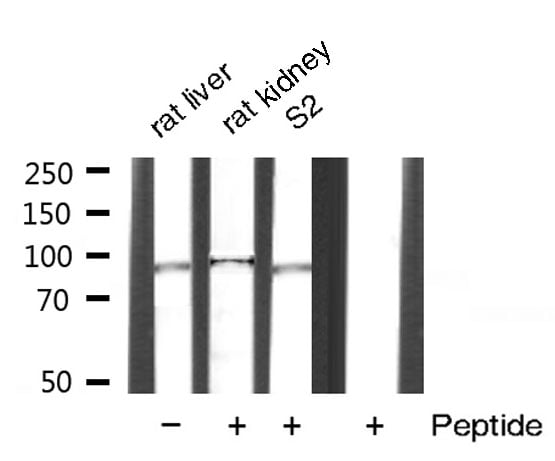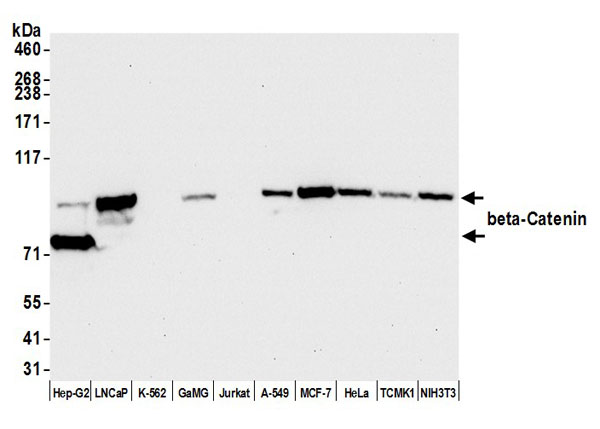Rabbit anti-Human CTNNB1/Beta Catenin Polyclonal Antibody | anti-CTNNB1 antibody
CTNNB1/Beta Catenin Rabbit anti-Human Polyclonal Antibody
IHC (Immunohistchemistry)
(CTNNB1/Beta Catenin Antibody-Human Uterus: Formalin-Fixed, Paraffin-Embedded (FFPE))
IHC (Immunohistochemistry)
(CTNNB1/Beta Catenin Antibody-Human Small Intestine: Formalin-Fixed, Paraffin-Embedded (FFPE))
IHC (Immunohistochemistry)
(CTNNB1/Beta Catenin Antibody-Human Placenta: Formalin-Fixed, Paraffin-Embedded (FFPE))
IHC (Immunohistochemistry)
(CTNNB1/Beta Catenin Antibody-Human Tonsil: Formalin-Fixed, Paraffin-Embedded (FFPE))
IHC (Immunohistochemistry)
(CTNNB1/Beta Catenin Antibody-Human Skin: Formalin-Fixed, Paraffin-Embedded (FFPE))
Beta-Catenin (CTNNB1) is a member of the armadillo family of proteins, and part of the Wnt/beta-catenin signaling pathway. It binds to the cytoplasmic region of the e-cadherin molecule (part of the adherens junction), a complex that is necessary for the creation and maintenance of epithelial layers by regulating cell growth and adhesion, as well as anchoring the actin cytoskeleton. This protein also binds to the APC gene, and mutations in this gene are implicated in colon cancer, papillary thyroid cancer, pilomatrixoma, medulloblastoma, and ovarian cancer. In pathology, CTNNB1 is used to identify desmoid tumors, colorectal cancer, and colon adenomas. It is positive in the membrane of the epithelium of the colon and appendix, weak in endothelial cells, hepatocytes, satellite cells in nerves and follicular dendritic cells in lymph nodes. Staining is membranous in normal colon, and can become nuclear in adenomas and adenocarcinomas.

























